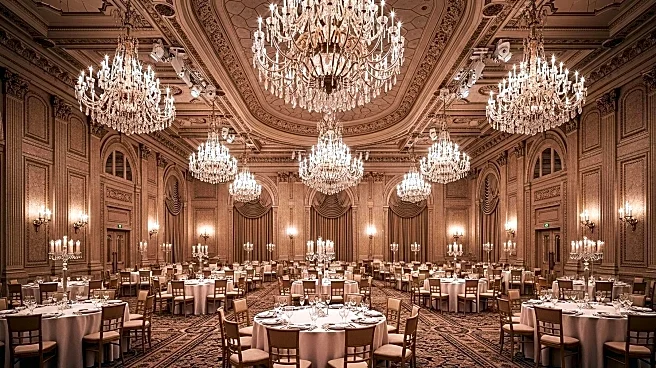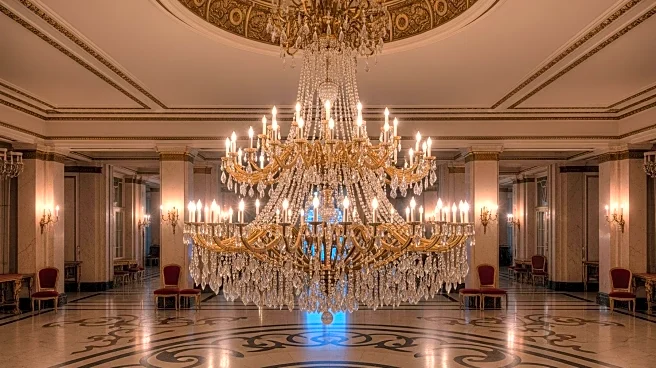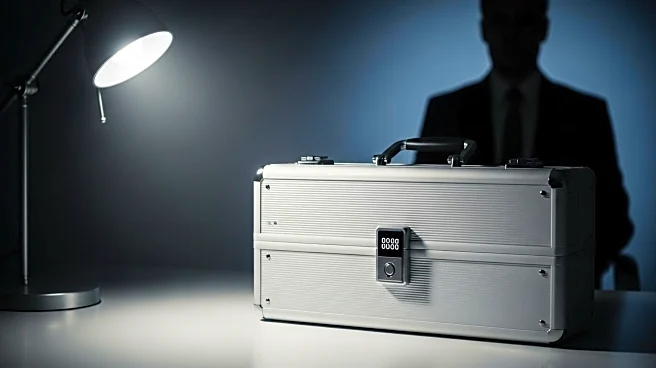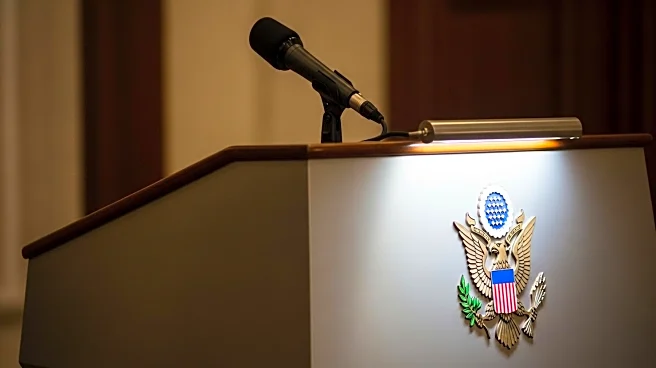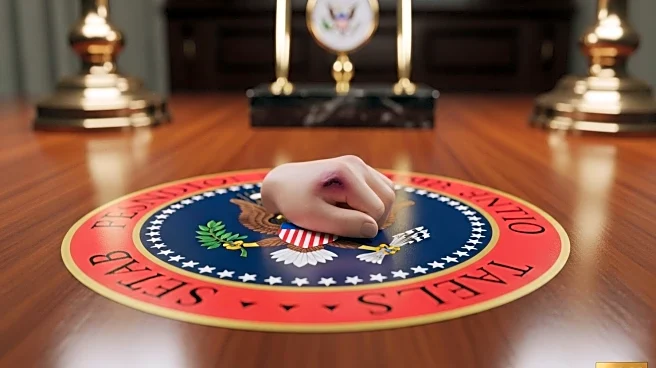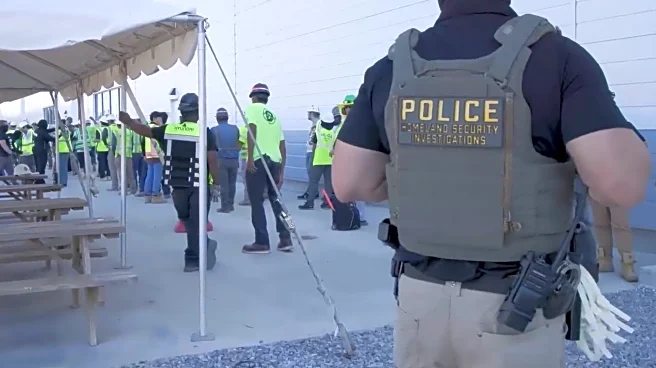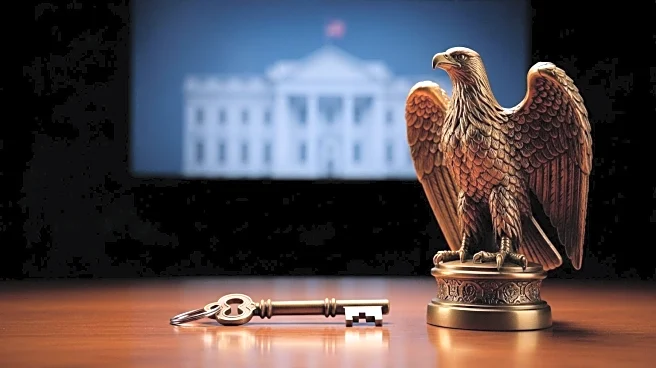What's Happening?
President Donald Trump announced that the new ballroom being constructed on the White House campus will be larger than initially planned, with a capacity of 900 people. This expansion increases the ballroom's capacity by nearly 40% from the originally planned 650 seats. The project, estimated to cost $200 million, is partly funded by President Trump and private donors. The ballroom aims to accommodate foreign leaders and dignitaries, reducing the need for outdoor tents on the South Lawn. Construction has already begun, marking the most significant change to the White House exterior since the East Wing expansion in 1942.
Why It's Important?
The expansion of the White House ballroom reflects President Trump's continued influence on the presidential residence and his interest in hosting large-scale events. The project underscores the administration's focus on enhancing the White House's capacity to host international gatherings, potentially strengthening diplomatic relations. The financial commitment from private donors highlights the role of public-private partnerships in government projects. The ballroom's construction may also set a precedent for future modifications to historic government buildings, balancing preservation with modernization needs.
What's Next?
As construction progresses, the White House will need to manage logistical challenges and ensure the project stays within budget. The expanded ballroom is expected to enhance the White House's ability to host state functions, potentially increasing its role in international diplomacy. The project's completion will be closely watched by historians and preservationists, given its impact on the historic site. Additionally, the ballroom's use in upcoming state visits and events will be a key indicator of its success in meeting the administration's goals.


